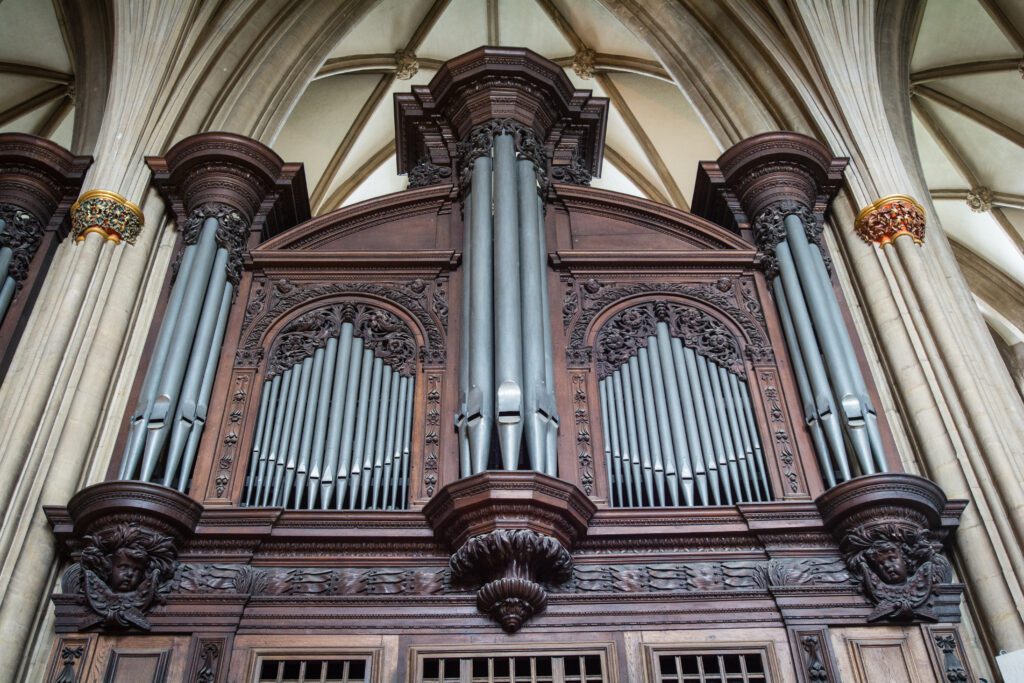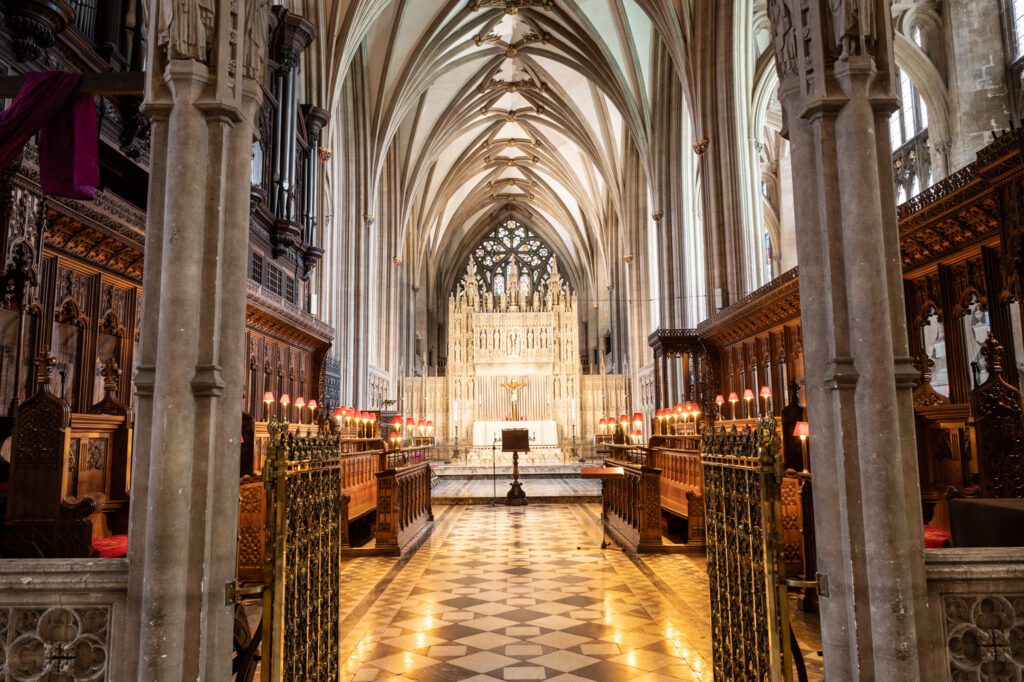Organ
One of the finest examples of the English Romantic organ to be found anywhere in the world
Music is integral to life and worship at the Cathedral. At the very heart of this is our organ.

Dating from 1685, the year of both Bach and Handel’s birth…
Music is integral to life and worship at the Cathedral. At the very heart of this is our organ, originally built by Renatus Harris in 1685, the same year that both Bach and Handel were born. The casing and some of the pipes date back to this Stuart-era instrument. After the creation the new Nave in the late 19th century, the decision was taken to employ the best organ builders of the time, Walker, to create a new instrument for the new Cathedral space. This organ survives to this day and is now one of the last examples of its kind and period in the country and one of the finest examples of the English Romantic organ to be found anywhere in the world.
We are delighted to embark on a once-in-a generation organ restoration project so that Bristol Cathedral can sustain the tradition of choral music for the future.
Support Organ
Our grateful thanks to the Harry Crook Foundation and the many supporters who have enabled the Organ restoration to get underway.
If you would like to support securing this magnificent instrument in to the 21st Century and support the associated music programme at Bristol Cathedral, we would be so grateful.
Thank you for your support
“…The organ’s technology dates from 1907 – the best analogy is that of a car.”
This is 1907 vintage piece which, rather than being driven on occasional Sunday afternoons in the countryside, is driven every single day, usually for over 20 hours each week and considerably more during Lent and Advent. There are some pipes and sounds which, in my 20 year tenure as Master of the Choristers and Organist, I have never heard. A sensitive and proper renovation would be hugely exciting for current organ builders, would help to preserve and clean the already exceptional sound quality and would mean that pipes and sounds were made fully available for the first time in decades”.
– Mark Lee, Director of Music

Organ Restoration
We are delighted to embark on a two-year restoration project which will clean, repair and restore the Renatus Harris Organ back to its former glory.
The Organ was last restored in 1989 and has played in over 13,000 services since! Expert organ builders, Harrison and Harrison will carefully take apart, clean, mend and rebuild the organ. Many of the smaller pipes will be taken to Harrison and Harrison’s workshop, while the larger pipes will remain on site.
Visitors will be able to follow the restoration journey and enjoy live ‘conservation in action’ at the Cathedral. To keep up to date with the project, make sure you subscribe to our newsletter.
Why is the work happening now?
The organ was last restored in 1989 and has played in over 13,000 services since. Over time parts wear out, pipes become dusty and moving parts get clogged up. This means some notes are no longer playable and the organ is unreliable.
What is the timeline for the restoration?
From 2024-2025, the organ will be carefully taken apart, cleaned, mended and rebuilt by expert organ builders Harrison and Harrison. Many of the smaller pipes will be taken to Harrison and Harrison’s workshop in Durham, while the larger pipes will remain on site.
Will there still be music at services?
An electric organ has been installed for use while the main organ is being restored, and the Cathedral choirs will sing as normal.
Funders
Our grateful thanks to the Harry Crook Foundation and the many other generous supporters who have made this once in a generation project possible.
Why do Cathedrals have organs?
Organ music has traditionally accompanied Cathedral choirs during services. Many of the cathedral’s services, such as Evensong and the Cathedral Eucharist, feature music sung by the Cathedral choir.
How does an organ work?
An organ is a mechanical wind instrument. This means that the pressing down keys or pedals and pulling a stop makes a physical change to the instrument. Air goes into the organ and out through pipes. The pipes the air goes into depends on which keys are pressed on the keyboard and which stop(s) are pulled.



